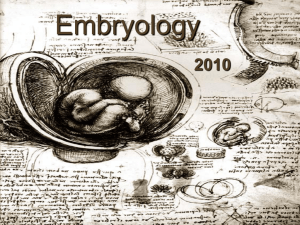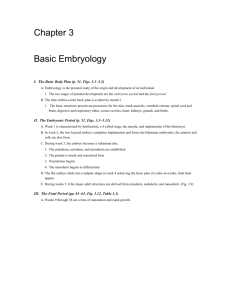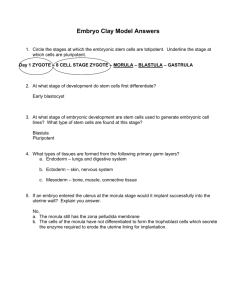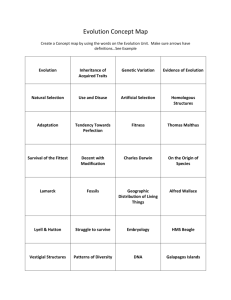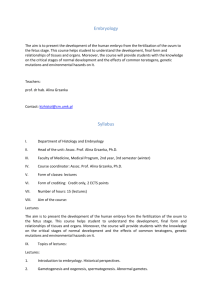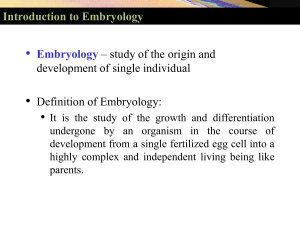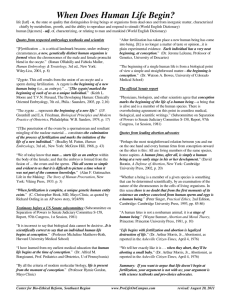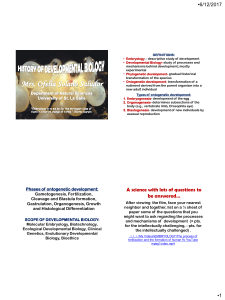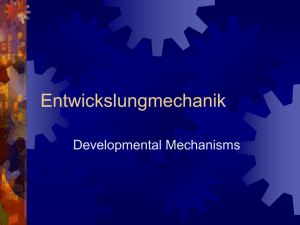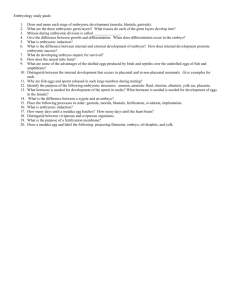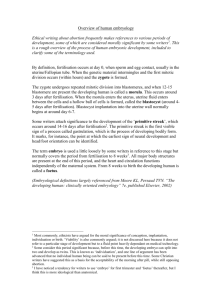1) Langman's Medical Embryology. by Thomas W. Sadler
advertisement
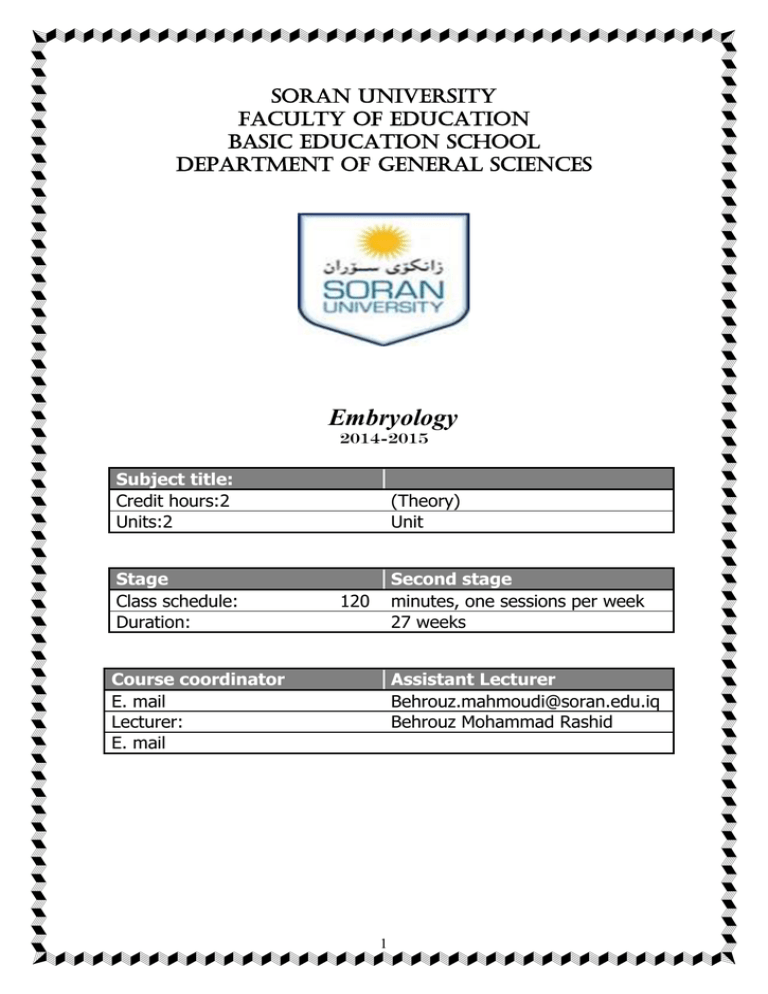
SORAN UNIVERSITY FACULTY OF EDUCATION BASIC EDUCATION SCHOOL DEPARTMENT OF GENERAL SCIENCES Embryology 2014-2015 Subject title: Credit hours:2 Units:2 (Theory) Unit Stage Class schedule: Duration: Second stage minutes, one sessions per week 27 weeks 120 Course coordinator E. mail Lecturer: E. mail Assistant Lecturer Behrouz.mahmoudi@soran.edu.iq Behrouz Mohammad Rashid 1 1. Subject Description A study of human embryology with emphasis on the fundamental developmental processes. Topics include gametogenesis, fertilization, and development of the embryo from zygote through the differentiation of the neural tube. Additionally, topics involving development of selected human organ systems will be covered. Clinical analysis of birth defects will also be discussed. 2. Require Background or Experience Cell and Molecular Biology, Histology, Genetics. 3. Subject Objective A. Throughout this course the students should understand complete details about the structures, development of human embryo at different stages including gametogenesis, fertilization, and implantation. B. By the end of this course the student will demonstrate the ability to assimilate and integrate information from lectures, practical, tutorial and independent activities on the gametogenesis, fertilization, implantation, embryonic period, foetal period and development of the pharyngeal arches and their derivatives. 4. Text book(s) and Readings: 1) Langman's Medical Embryology. by Thomas W. Sadler 2) General embryology. By William Erskine Kellicott 5. Student Materials: 1. Textbook and References 2. Lecture Notes 3. CD and internet resources 6. Collage Facilities 1. Classroom with Whiteboard and projection facilities 2. College library 2 7. Subject Outline Week1 An Introduction to Embryology Week2 Week3 Molecular Regulation and Signaling Gametogenesis Week4 Ovulation to Implantation Week5 Bilaminar Germ Disk Week6 Week7 Trilaminar Germ Disk The Embryonic Period Week8 The Gut Tube and the Body Cavities Week9 Week10 The Fetus an Placenta System Based Embryology: The Auxial Skeleton Development Week11 Muscular System Development Week12 Limbs Development Week13 Cardiovascular System Development Week14 Respiratory System Development Week15 Week16 Week17 Week18 Week19 Week20 Week21 Week22 Week23 Digestive System Development Urogenital system Development Head and Neck Development Central Nervous System Development Ear Development Eye Development Integumentary System Development Birth Defects and Prenatal Diagnosis 3 8. Instructional Methods: a. Lecture / Discussion sessions b. Questions and Answers c. Homework's and Readings d. Quizzes 9. Evaluation of Outcomes Evaluation for each course will be based on the following: First Course 1st Exam 30% nd 2 Exam 30% Quizzes 40% --------------------------------Total 100% Second Course 1st Exam 30% nd 2 Exam 30% Quizzes 40% --------------------------------Total 100% Total marks is 25/40 for Theory and 15/40 for practical. 10. Final Exam Data: Pointed by the examination committee 4 Sample of Questions and Answers. The seven-day blastocyst: .A) has a single layer of trophoblast at the embryonic pole .B) has an amniotic cavity .C) is attached to the endometrial epithelium D) is called the hypoblast answer; C After the morula stage what is the next stage? What is the morphological feature .that defines this stage?? . Answer: After passing the morula stage in which the embryo is a compact mass of cells, the next stage is the blastula stage. In the blastula stage the compactness is lost and an internal cavity filled with fluid appears inside, the blastocele. 5
